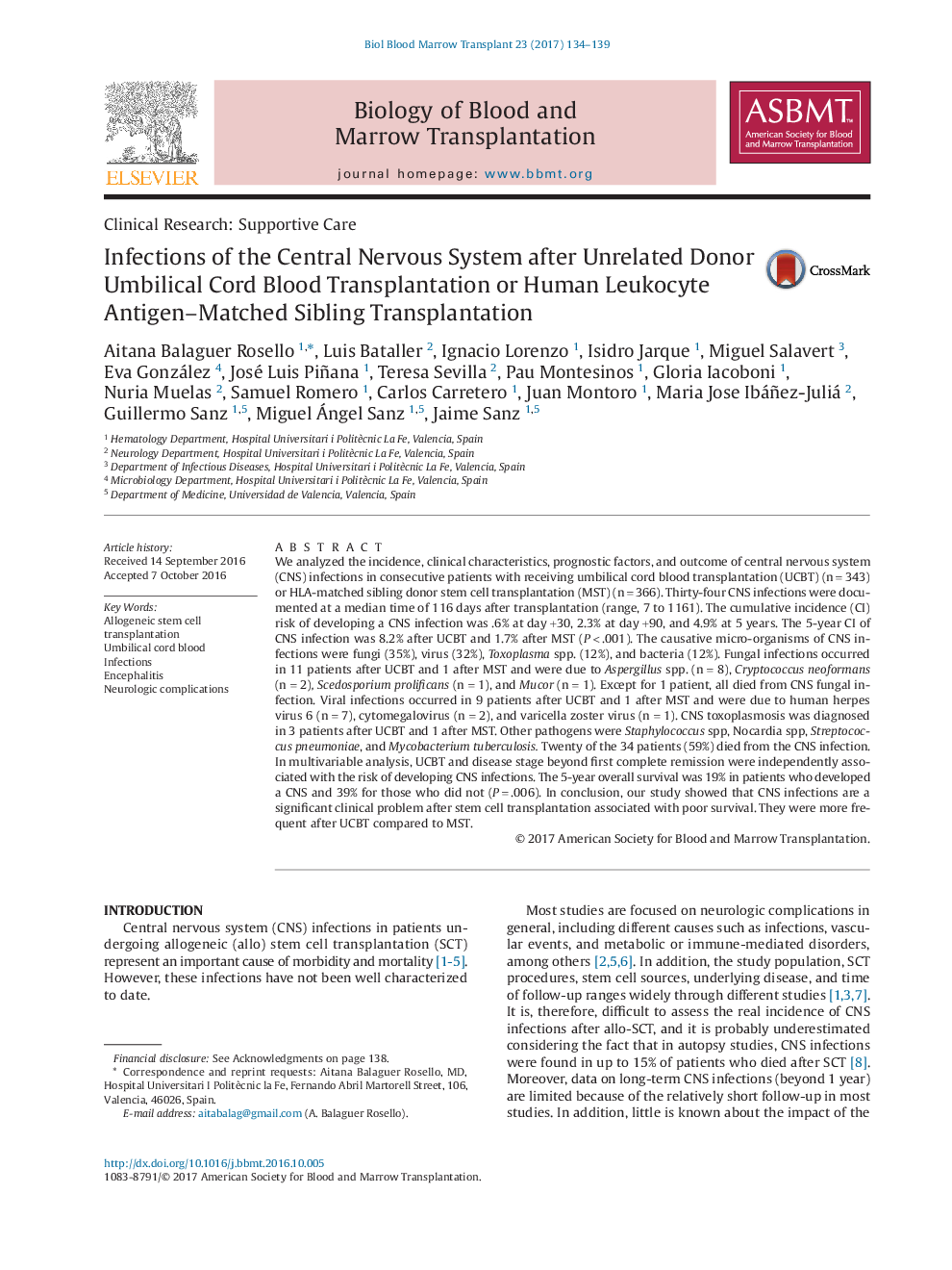| کد مقاله | کد نشریه | سال انتشار | مقاله انگلیسی | نسخه تمام متن |
|---|---|---|---|---|
| 5524286 | 1546246 | 2017 | 6 صفحه PDF | دانلود رایگان |
- Central nervous system infections are a significant clinical problem associated with poor survival
- The 5-year cumulative incidence of central nervous system infection was 4.9%, with a median onset of 116 days after transplantation
- Umbilical cord blood transplantation and advanced disease stage were associated with risk of developing central nervous system infections
- The most common causative organisms were fungal and viral
We analyzed the incidence, clinical characteristics, prognostic factors, and outcome of central nervous system (CNS) infections in consecutive patients with receiving umbilical cord blood transplantation (UCBT) (nâ=â343) or HLA-matched sibling donor stem cell transplantation (MST) (nâ=â366). Thirty-four CNS infections were documented at a median time of 116 days after transplantation (range, 7 to 1161). The cumulative incidence (CI) risk of developing a CNS infection was .6% at day +30, 2.3% at day +90, and 4.9% at 5 years. The 5-year CI of CNS infection was 8.2% after UCBT and 1.7% after MST (Pâ<â.001). The causative micro-organisms of CNS infections were fungi (35%), virus (32%), Toxoplasma spp. (12%), and bacteria (12%). Fungal infections occurred in 11 patients after UCBT and 1 after MST and were due to Aspergillus spp. (n = 8), Cryptococcus neoformans (n = 2), Scedosporium prolificans (n = 1), and Mucor (n = 1). Except for 1 patient, all died from CNS fungal infection. Viral infections occurred in 9 patients after UCBT and 1 after MST and were due to human herpes virus 6 (n = 7), cytomegalovirus (n = 2), and varicella zoster virus (n = 1). CNS toxoplasmosis was diagnosed in 3 patients after UCBT and 1 after MST. Other pathogens were Staphylococcus spp, Nocardia spp, Streptococcus pneumoniae, and Mycobacterium tuberculosis. Twenty of the 34 patients (59%) died from the CNS infection. In multivariable analysis, UCBT and disease stage beyond first complete remission were independently associated with the risk of developing CNS infections. The 5-year overall survival was 19% in patients who developed a CNS and 39% for those who did not (Pâ=â.006). In conclusion, our study showed that CNS infections are a significant clinical problem after stem cell transplantation associated with poor survival. They were more frequent after UCBT compared to MST.
Journal: Biology of Blood and Marrow Transplantation - Volume 23, Issue 1, January 2017, Pages 134-139
